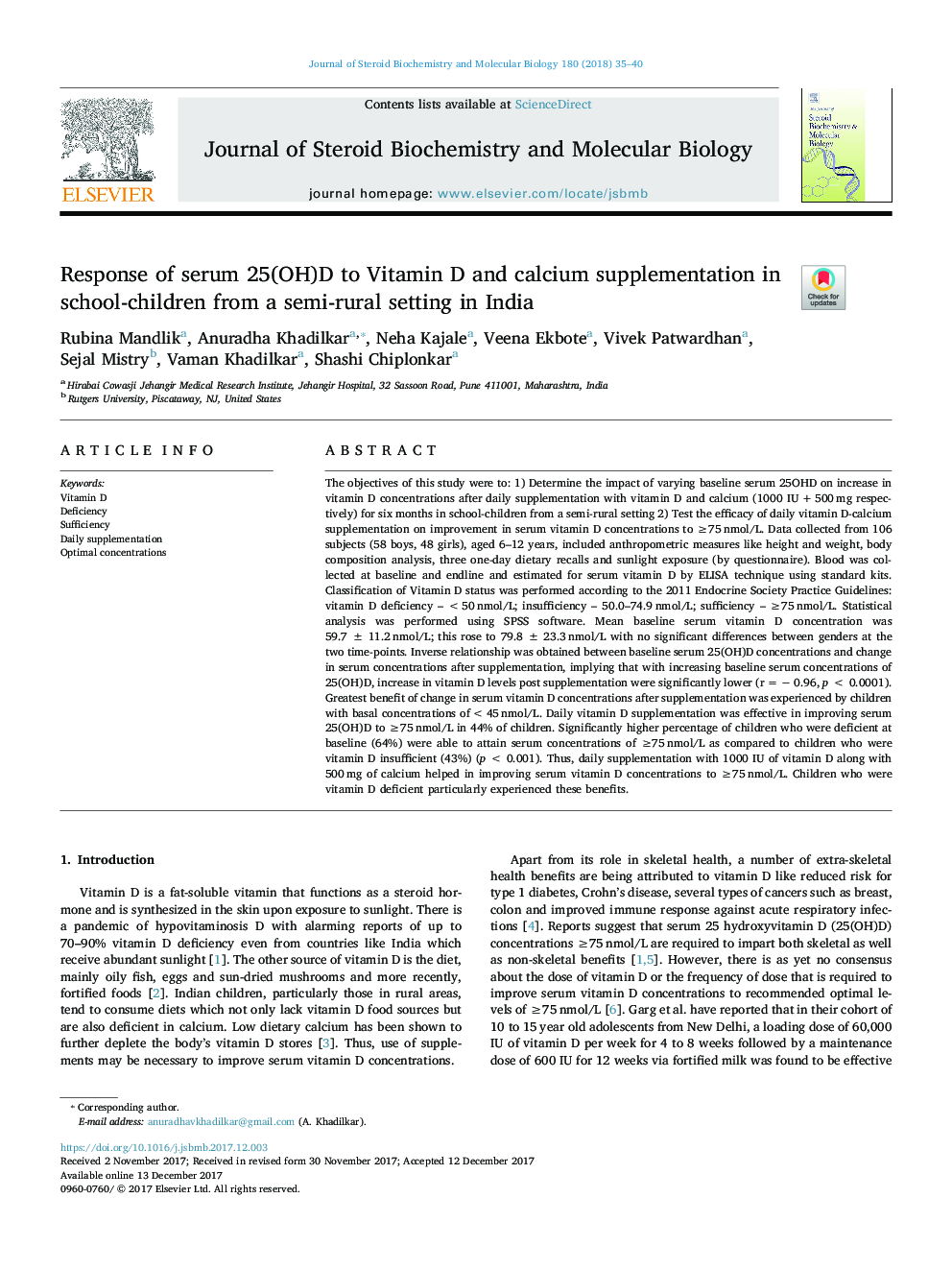| Article ID | Journal | Published Year | Pages | File Type |
|---|---|---|---|---|
| 8337799 | The Journal of Steroid Biochemistry and Molecular Biology | 2018 | 6 Pages |
Abstract
The objectives of this study were to: 1) Determine the impact of varying baseline serum 25OHD on increase in vitamin D concentrations after daily supplementation with vitamin D and calcium (1000 IUâ¯+â¯500â¯mg respectively) for six months in school-children from a semi-rural setting 2) Test the efficacy of daily vitamin D-calcium supplementation on improvement in serum vitamin D concentrations to â¥75â¯nmol/L. Data collected from 106 subjects (58 boys, 48 girls), aged 6-12 years, included anthropometric measures like height and weight, body composition analysis, three one-day dietary recalls and sunlight exposure (by questionnaire). Blood was collected at baseline and endline and estimated for serum vitamin D by ELISA technique using standard kits. Classification of Vitamin D status was performed according to the 2011 Endocrine Society Practice Guidelines: vitamin D deficiency -â<50â¯nmol/L; insufficiency - 50.0-74.9â¯nmol/L; sufficiency - â¥75â¯nmol/L. Statistical analysis was performed using SPSS software. Mean baseline serum vitamin D concentration was 59.7â¯Â±â¯11.2â¯nmol/L; this rose to 79.8â¯Â±â¯23.3â¯nmol/L with no significant differences between genders at the two time-points. Inverse relationship was obtained between baseline serum 25(OH)D concentrations and change in serum concentrations after supplementation, implying that with increasing baseline serum concentrations of 25(OH)D, increase in vitamin D levels post supplementation were significantly lower (râ¯=â¯ââ¯0.96, pâ¯<â¯0.0001). Greatest benefit of change in serum vitamin D concentrations after supplementation was experienced by children with basal concentrations of <45â¯nmol/L. Daily vitamin D supplementation was effective in improving serum 25(OH)D to â¥75â¯nmol/L in 44% of children. Significantly higher percentage of children who were deficient at baseline (64%) were able to attain serum concentrations of â¥75â¯nmol/L as compared to children who were vitamin D insufficient (43%) (pâ¯<â¯0.001). Thus, daily supplementation with 1000 IU of vitamin D along with 500â¯mg of calcium helped in improving serum vitamin D concentrations to â¥75â¯nmol/L. Children who were vitamin D deficient particularly experienced these benefits.
Keywords
Related Topics
Life Sciences
Biochemistry, Genetics and Molecular Biology
Biochemistry
Authors
Rubina Mandlik, Anuradha Khadilkar, Neha Kajale, Veena Ekbote, Vivek Patwardhan, Sejal Mistry, Vaman Khadilkar, Shashi Chiplonkar,
